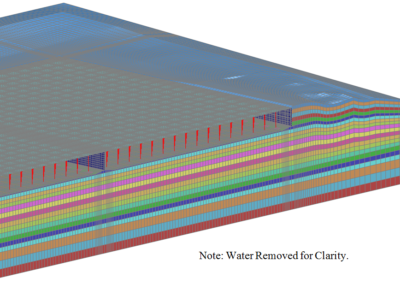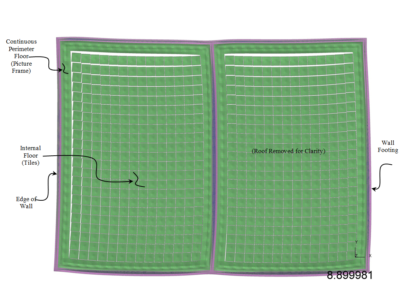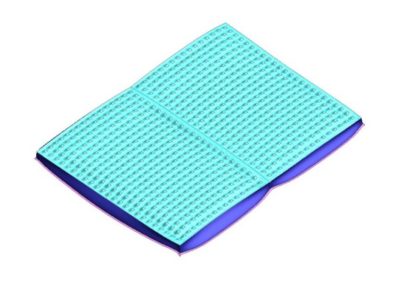Maple Leaf Reservoir Seismic Retrofit
3D nonlinear seismic analysis of 60 million gallon underground water storage facility in Seattle, WashingtonPROJECT TYPE
Advanced Soil-Fluid-Structure Interaction Analysis
LOCATION
Seattle, WA
OWNER
Seattle Public Utilities
Maintaining water supply for fire suppression and domestic water usage following a major seismic event and ensuring essentially no damage following a smaller seismic event is a critical function for the Maple Leaf Reservoir in Seattle, Washington. This 60 million gallon capacity major underground water storage facility is a two-chambered rectangular reinforced concrete box measuring approximately 670’L x 450’ W x 30’D. It has a continuous roof diaphragm but a discontinuous floor system with independent floor tiles separated with control joints. The top of the reservoir is slightly lower than the surrounding ground surface.
The seismic response of the reservoir is influenced by the kinematic effects from the surrounding soil, the inertia effects of the structure itself, the hydrodynamic effect of the water in the reservoir, as well as the nonlinear interaction between the reservoir and the soil and between different structural components. The soil response is expected to be highly nonlinear due to potentially severe seismic excitation. Significant differences in the ground surface elevation between two sides of the reservoir and a localized decrease in ground surface elevation near one corner was found to induce unsymmetrical loading and stress concentrations.
Advanced site-specific 3D nonlinear soil-fluid-structure-interaction dynamic analysis procedures were used to determine the nature and severity of the reservoir performance deficiencies under the 150 year return-period Operational Based Earthquake (OBE) and the 2,475 year return-period Maximum Considered Earthquake (MCE). This realistic modeling and analysis approach identified deficiencies that could not have been captured by traditional pseudo-static, two-dimensional, or equivalent linear analysis methods. Based on these analyses, unique retrofit solutions were evaluated that required complex load transfer mechanisms. These retrofit solutions and associated load paths were feasible only because of the accurately captured and realistic response behavior predictions.
SC Solutions bundled advanced high performance computing software and hardware to deliver highly-detailed, nonlinear soil-fluid-structure interaction analysis results without compromising tight project schedules.



